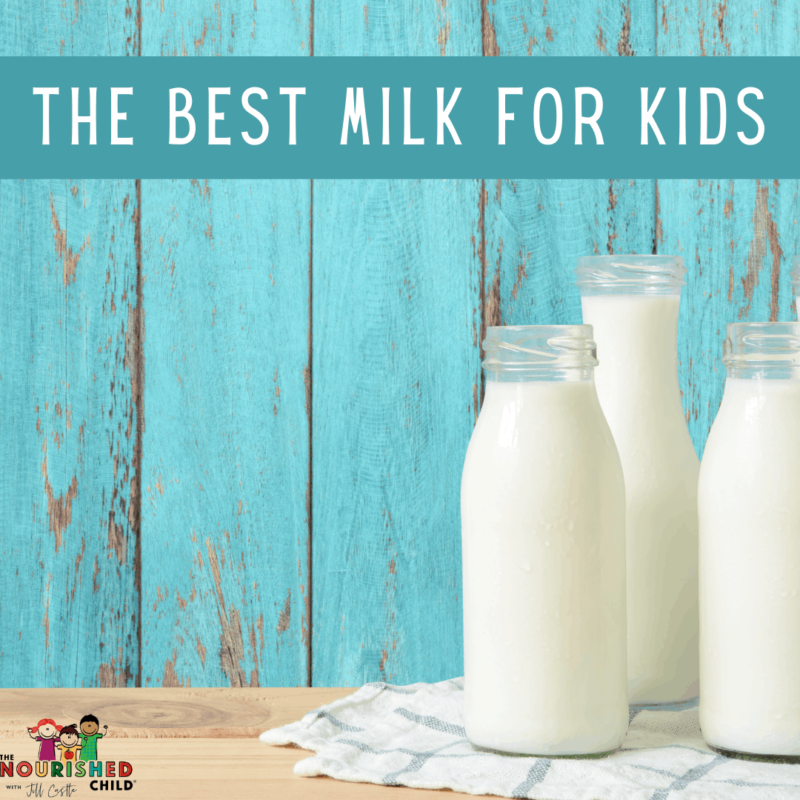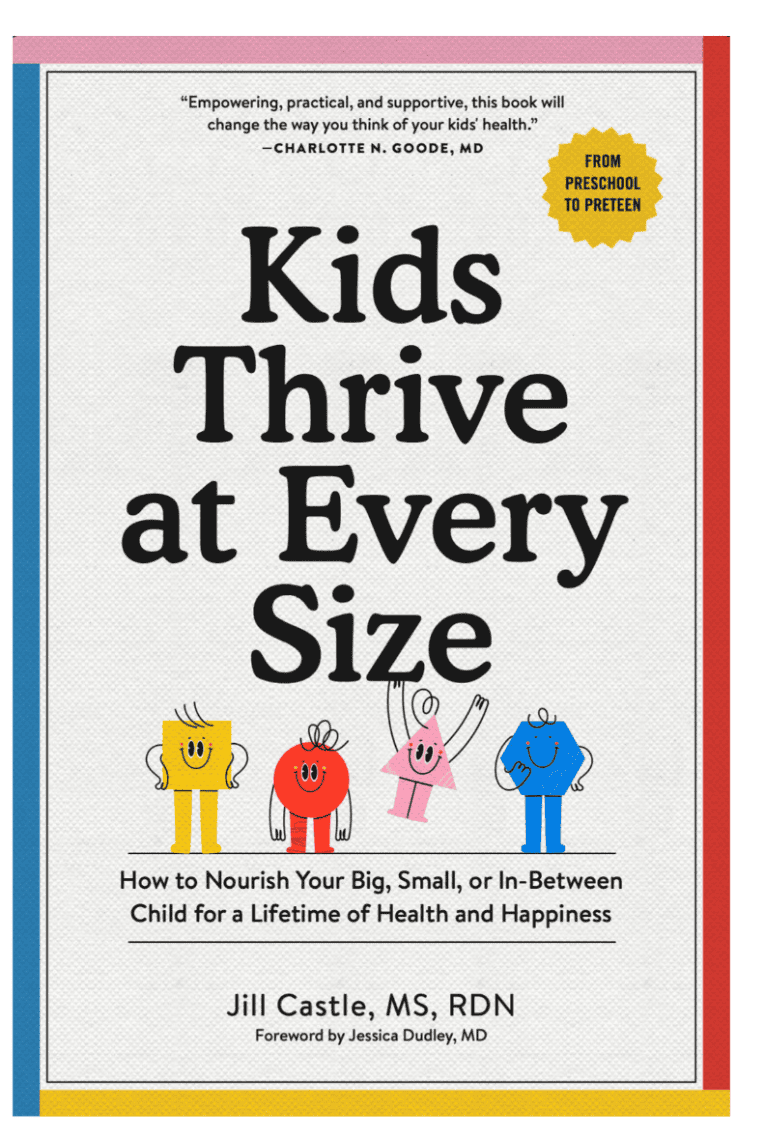4 Easy Ways to Improve Food When Kids Carry Extra Body Fat
August 15, 2024
Food for all kids should be nutritious and satisfying, but if your child has extra body fat, changing their diet may seem daunting. Learn how to help your child eat nutritiously and stay satisfied with these easy, small changes in food and nutrition.
How can you change food for kids with extra body fat so they have a nutritious diet that helps them feel satisfied and promotes their health?
Most of us think about the obvious changes, like swapping whole fat foods for non-fat foods, restricting portion sizes, or avoiding fast food, but these lifestyle changes, while well-intentioned, can get out of hand, resulting in food restriction or worse, contributing to low self-esteem in the future.
There are many ways to help the larger-bodied child, including promoting healthy habits like increasing their physical activity, getting enough sleep, and improving screen time habits, but food is the area where many families place their attention and efforts.
As a pediatric dietitian, I’ve worked with many parents who worry about what their child is eating, and how much. They worry about their child’s size and the calories, fat, and sugar they consume.
With all the attention on ‘childhood obesity,’ wanting your child to make better food choices is natural. But it’s not always easy to implement this without potentially causing harm to their emotional wellbeing.
While weight loss diets are all you may be hearing about, I recommend you take a more positive approach. I don’t advise weight loss diets because they may negatively impact your child’s mental health, healthy relationship with food, their sense of self-esteem, and body image.
Besides, yo-yo dieting (going on and off diets over the years) has been shown to damage a person’s metabolism, possibly causing more weight gain down the road.
How to Improve Food for Kids Who are Larger
Here are a few easy ways to optimize food and let it work on behalf of your child, instead of against them.
1. Use Filling Nutrients to Increase Satisfaction After Eating
Kids need an array of nutrients in their diet to grow well and be nourished. However, when it comes to feeling satisfied after eating, there are three nutrients that do a good job of helping kids feel full: Protein, fiber and fat.
Protein
Protein, when eaten, increases the thermic effect of food, or the amount of energy burned after eating. This is especially true with animal proteins like meat, eggs, and dairy foods.
Additionally, protein encourages the release of an appetite hormone (leptin) in the gut that cues the sensation of fullness. Protein is slower to digest, so that helps keep children feeling fuller, for longer, too.
Fiber
Fiber in foods like fresh fruit, vegetables and whole grains can thicken or gel in the stomach causing the feeling of fullness. Fiber also takes a while to digest and slows stomach emptying, sustaining that full feeling.
The Combination of Protein + Fiber + Fat
Although fat is also filling by itself, studies show that the presence of fat in a meal doesn’t necessarily equate to less eating due to fullness, like it does with protein and fiber.
However, when fat is combined with protein and fiber in a meal, research suggests blood sugar is steady and food cravings are less intense. Additionally, the awareness of fullness, also called satiety awareness, is higher when these nutrients are eaten in combination.
How to Put This Into Practice:
- Serve a variety of foods to your child. For children with larger-bodies, focus on the filling nutrients. You can do so by choosing a protein food first (meat, beans, dairy, milk) to anchor the meal or snack.
- Build up the “fullness factor” by adding a fiber-containing food such as a whole grain, fruit, or vegetable.
- To encourage satisfaction after eating, try to provide at least four different food categories (or food groups) at meals and two different food categories at snack time.
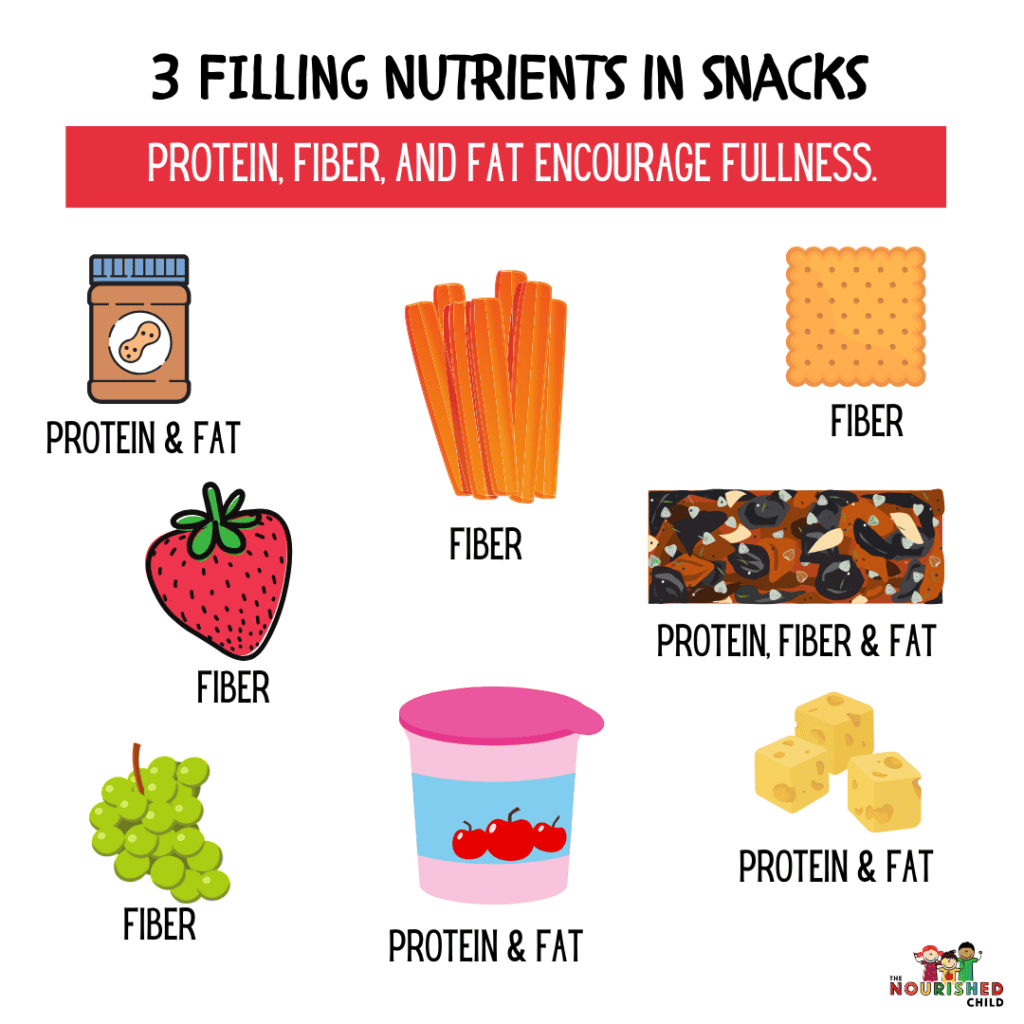
2. Use Starter Portions and Serve Seconds as Needed
Starter portions are age-appropriate servings for children. I like this term because it implies that a child should use their appetite cues to determine whether they’ve had enough to eat or not. Some kids will need a second helping, especially if they’re in a growth spurt, or if they didn’t get enough to eat earlier in the day.
Starter portions give you a reasonable place to start with a serving of food, and allows you to serve seconds if your child’s appetite calls for it.
Here are some examples of starter portions by age (You can find more info here and here.)
Toddler: ½ cup milk; 1 tablespoon per year of protein, grains, fruit, and vegetables. For example, a 2 year old would receive 2 ounces; a 4 year old would start with a ¼ cup (4 tablespoons).
Child: 1 cup milk; ½ cup fruit or veggie; 2-3 ounce protein
Teen: 1 cup milk; 1 cup fruit or veggie; 3-4 ounce protein
How to Put This Into Practice:
Personally, I’m not a person who measures food that much. I like to eye-ball portions. However, I do encourage my clients to:
- Measure at least once to get an accurate visual of what a tablespoon, a ¼ cup or 1 cup looks like on the plate.
- Use a plate that corresponds to your child’s age is an easy way to approximate starter portions. Use a salad plate for young children and elementary age kids; use a dinner plate (10” diameter) for middle- and high-school kids. For snacks, use a saucer for younger kids and a salad plate for older children.
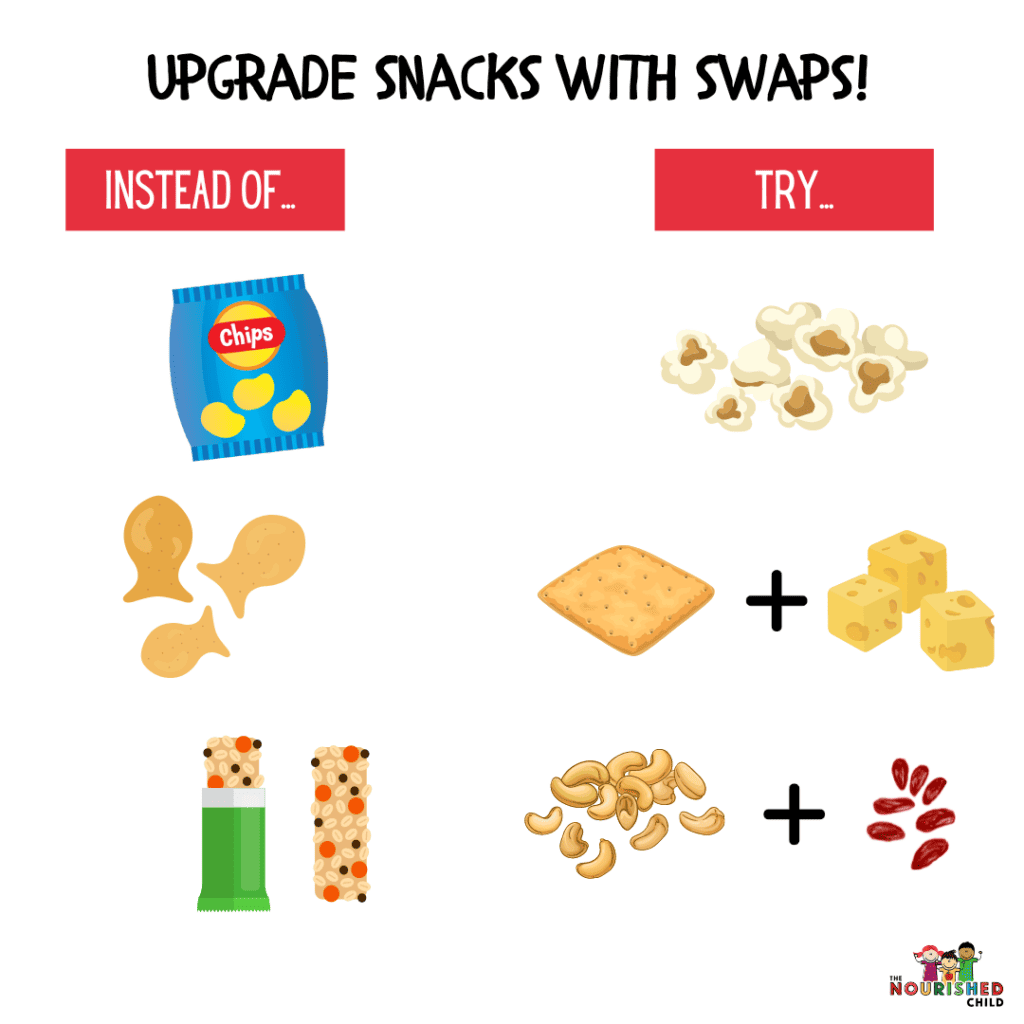
3. Simple Snack Swaps to Improve Nutrition
Snack time is where a lot of kids get off track with their eating, sometimes resulting in a poor diet. (If you want my deep dive into kids and snacking, check out my book The Smart Mom’s Guide to Healthy Snacking.)
Snack time is a good time to include fruits and vegetables. Remember, we’re aiming for five servings of fruits and vegetables (combined) in a day! Unless you add these to snack time, it may be difficult to meet this recommendation.
How to Put This Into Practice:
- Use a variety of veggie dips to entice more vegetable consumption. You can offer this right before serving dinner when your child may get the munchies.
- Make a fruit plate with yogurt dip, peanut butter dip, or Nutella as a great way to encourage your child to increase their fruit consumption.
- Switch up snack time foods. In other words, don’t serve the same snacks day after day. One, it can get boring for kids (and kids tend to eat more when they’re bored!). And two, you’re missing an opportunity to bring more nutrition into your child’s day.
Upgrade Snacks with these Swaps
- Instead of chips, try popcorn (Why? More fiber!)
- Instead of cheesy crackers, try a whole grain cracker like Triscuits and sliced cheese (Why? More fiber + protein!)
- Instead of fishy crackers, try cashews and dried cranberries (Why? More protein, fiber and healthy fats!)
Use snack time as an opportunity to change things up!
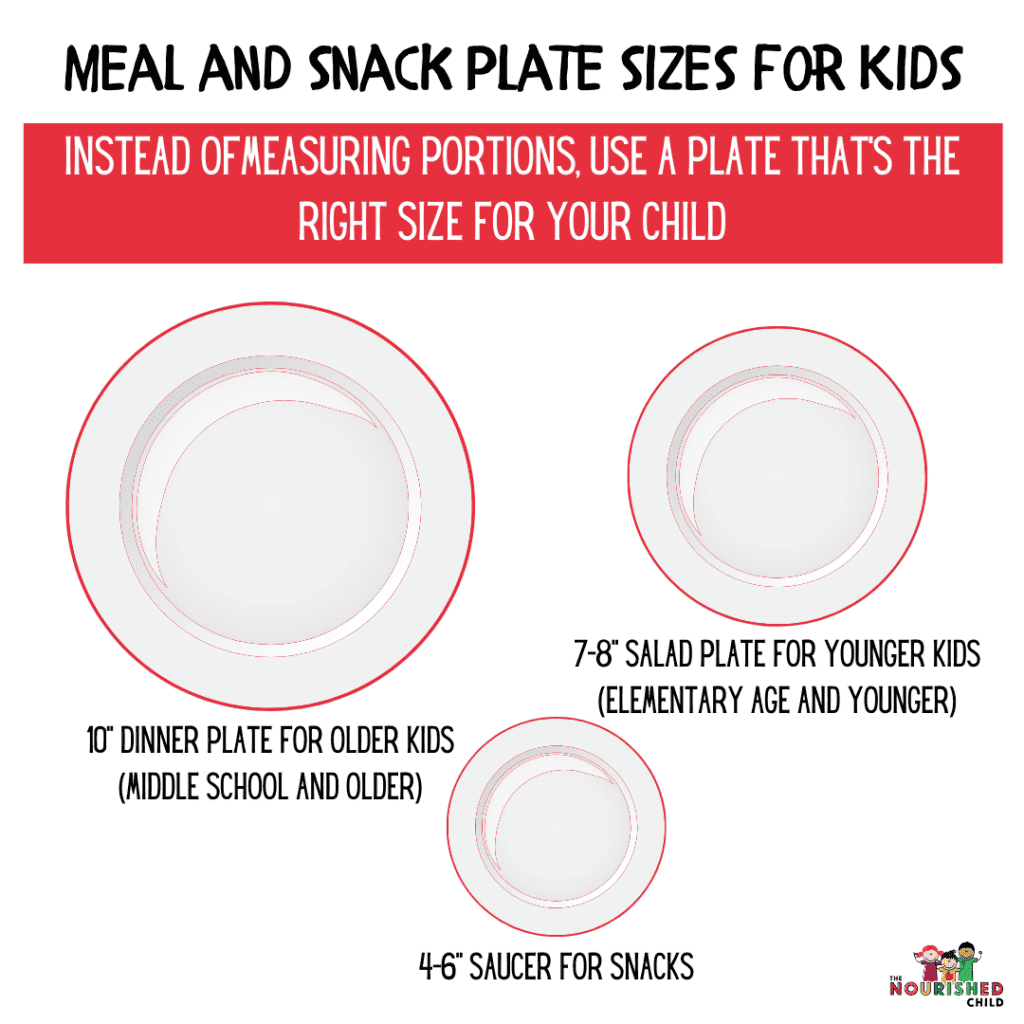
4. Use Monitoring and Strategies to Help Your Child with Extra Weight Eat Well
Certain foods in your child’s diet need to be monitored. If you’ve heard that you don’t need to be aware of what your child is eating, or that certain types of foods like sweets or fried snack foods should be allowed ad lib, I’m here to give you a reality check.
Although sweets and treats like sugary drinks, ice cream, or other desserts are okay to offer and serve your child, you do need to monitor them and make sure they aren’t taking over the balance of nutritious foods. Fried foods like French fries, potato chips, tortilla-type chips are higher in fat, but poor in other nutrients.
They, too, need to be monitored and planned into the overall diet.
There is so much nuance when it comes to sweet foods and other treats. Some children, especially those with an active lifestyle, can eat a serving of sweets or treats daily, and maintain their health. They can over-indulge on some days and back off on others.
But most children, for long-term health, are better served by a strategic plan for sweets and treats, one that is predictable, allows enjoyment, and strikes the balance in favor of overall health.
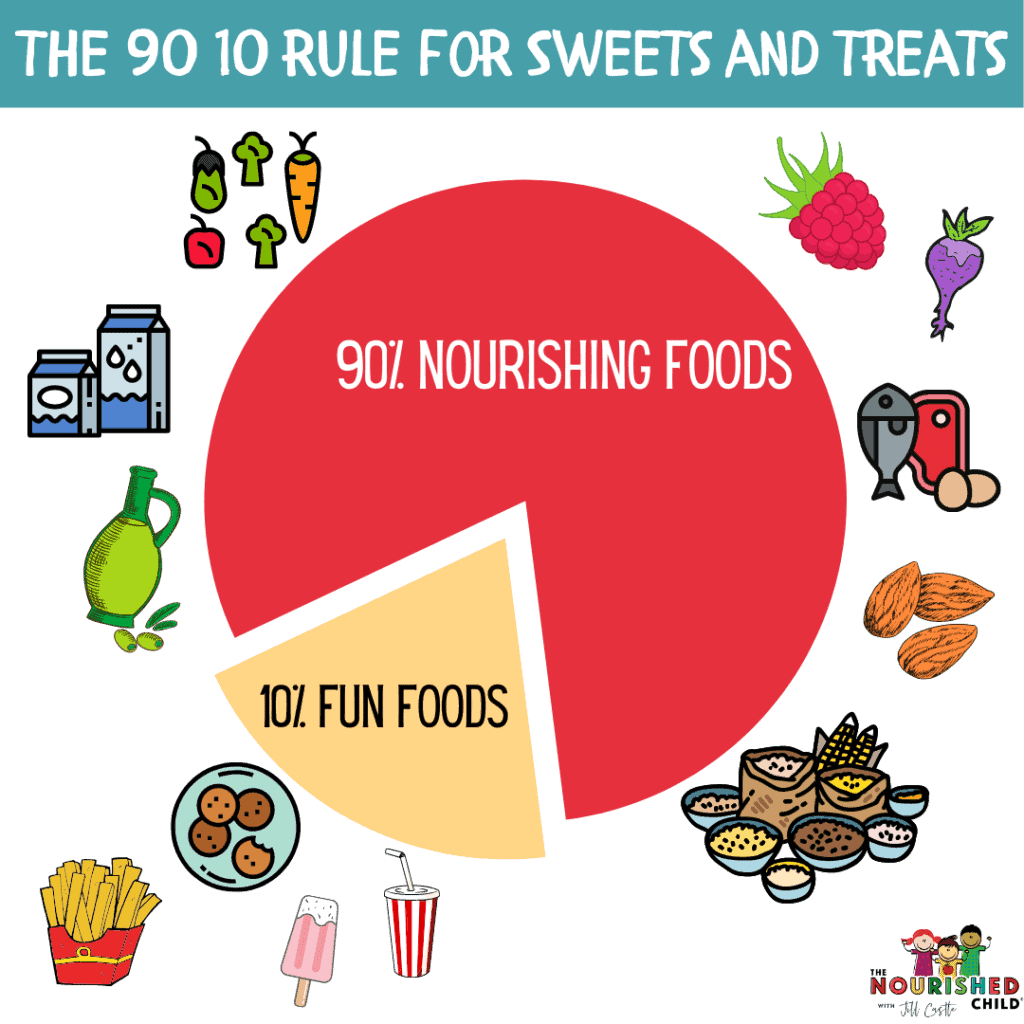
How to Put This Into Practice:
- Find the “sweet spot” for your child and family. For some families, it will be offering a treat every day and for others, there may be more limitations, like having sweets on the weekends. I don’t advise a “no sweets” approach. Most kids can’t live well with this type of restriction.
- If your child is overly focused on sweets or can’t control their eating when they get them, you may be surprised to learn they may not be getting enough exposure to sweets! Remember, scarcity increases demand. Kids who are deprived of sweet treats oftentimes seek them out or overreact when they get them.
- A plan for sweets and treats that works for your family and supports your child’s enjoyment and health and wellbeing is the goal. For fried foods, use them as a “side dish” and in a starter portion. Combine these with other nutritious foods, like tortilla chips and salsa or guacamole.
Start with Small Changes for Better Health!
Food isn’t the only path you can take to help your child with a larger body gain health. Together with food and nutrition, there are many other areas that can optimize your child’s health.
But making positive changes for the whole family in the area of food is a good place to start! Family meals, healthy snacks, and promoting fullness after eating may go a long way to helping your child eat well.
Related Article: How to Talk About Weight with Your Child
Are You Setting Up the Healthy Habits Your Child Needs to Thrive?
Take my Healthy Habits Quiz and find out! And check out my book, Kids Thrive at Every Size: How to Nourish Your Big, Small, or In-Between Child for a Lifetime of Health and Happiness.


Jill Castle, MS, RD
I like empowering parents to help their children and teens thrive at every size with realistic advice centered on healthful habits around food, feeding, nutrition and health behaviors. As a pediatric dietitian and author, my goal is to share strategies and realistic advice to help you raise a healthy and happy child through my articles and podcast.

